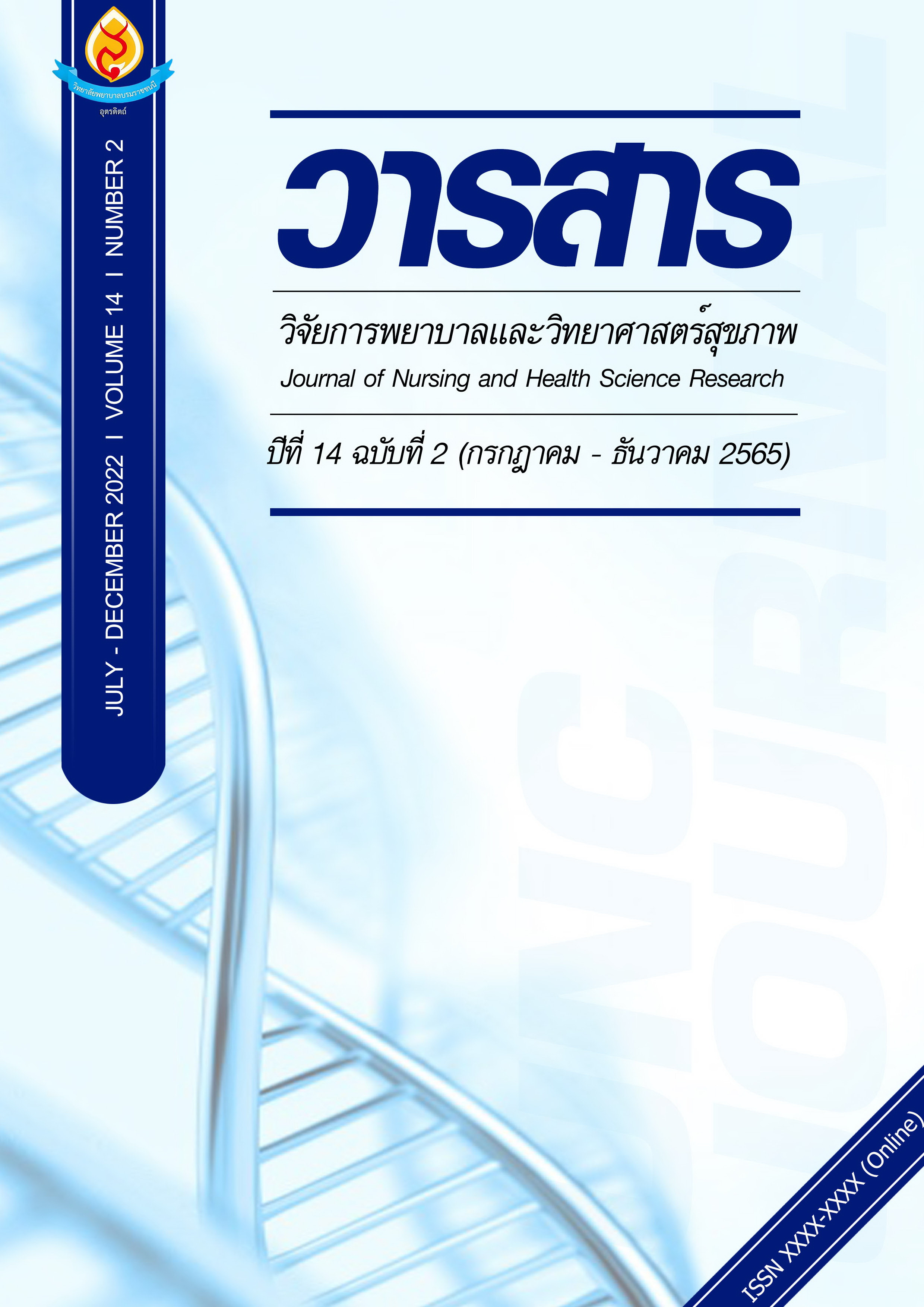การฝึกด้วยน้ำหนักของร่างกายและการยืดเหยียดกล้ามเนื้อที่มีต่ออาการปวดคอ ไหล่ และหลัง ในบุคลากรของมหาวิทยาลัยราชภัฏสุรินทร์
Main Article Content
บทคัดย่อ
อาการปวดคอ ไหล่ และหลัง สามารถเกิดขึ้นได้กับทุกคน โดยส่วนใหญ่เป็นผลมาจากการนั่ง ยืน หรือทำงาน อยู่ในท่านั้นเป็นเวลานาน ทำให้กล้ามเนื้อมีอาการเกร็งตัว ส่งผลให้เกิดอาการปวด และจำกัดการเคลื่อนไหวในบริเวณดังกล่าว หลักฐานเชิงประจักษ์แสดงให้เห็นว่า การออกกำลังกายด้วยการใช้ร่างกายเป็นแรงต้านกับการยืดเหยียดกล้ามเนื้อ สามารถช่วยลดอาการปวดคอ ไหล่ และหลังได้ แต่การออกกำลังกายด้วยการใช้น้ำหนักของร่างกาย ยังสามารถทำให้กล้ามเนื้อมีความแข็งแรงเพิ่มขึ้นอีกด้วย ซึ่งอันจะส่งผลดีต่อบุคลากรให้มีสุขภาพที่ดีเป็นกำลังสำคัญในการพัฒนามหาวิทยาลัยต่อไป
Article Details

อนุญาตภายใต้เงื่อนไข Creative Commons Attribution-NonCommercial-NoDerivatives 4.0 International License.
บทความหรือข้อคิดเห็นใดใดที่ปรากฏในวารสารวิจัยการพยาบาลและวิทยาศาสตร์สุขภาพ เป็นวรรณกรรมของผู้เขียน ซึ่งบรรณาธิการหรือสมาคมศิษย์เก่า ไม่จำเป็นต้องเห็นด้วย และบทความที่ได้รับการตีพิมพ์เผยแพร่ถือเป็นลิขสิทธิ์ของวารสารวิจัยการพยาบาลและวิทยาศาสตร์สุขภาพ
เอกสารอ้างอิง
Blatter, B., & Bonger, P. (2002). Duration of computer use and mouse use in relation to musculoskeletal disorder of neck or upper limb. International Journal of Industrial, Ergonomics, 30, 295-306.
Chaiklieng, S., Suggaravetsiri, P., & Boonprakob, Y. (2010). Work ergonomic hazards for musculoskeletal pain among university office workers, Walailak Journal Sciences & Technology, 7(2), 169 – 176.
European Agency Safety and Health at works. (2010). Office ergonomic. [Online]. Retrieved (2017, November 10) from http://osha.europa.eu/en/publications/e-facts/efact13.
Fleck, Steven J. & William J., Kraemer. (1987). Designing resistance training program. Champaign, Ill: Human Kinetic.
Hans, S. U. & Kunz. H. (1991). Stretching and strengthening exercise. New York: Theme Medicine Publishers, Inc,.
Jensen C., Finsen, L., Sogaard, K., & Christesen, H. (2002). Musculoskeletal symptoms and duration of computer and mouse use. International Journal of Industrial Ergonomics,30(4), 265-275.
Lawrence, J., Fine, A., Barbara A., & Silverstein. (1995). Work-related disorders of the neck and upper extremity. In L. S. Barry & W. H. David (Ed.). Occupation Health Recognizing and Preventing Work-Related Disease. (3rd ed.). New York: United States.
Muniamuthu, S., & Ruju, R. (2010). The influence of psychosocial factor on the occurrence of musculoskeletal disorder regarding VDT users. European Journal of Scientific Research. 43(2), 290-296.
Paksa, W. (2010). Effects of body weight and elastic trainings on elderly’s leg Strength. (Master’s thesis). Srinakharinwirot University. Bangkok. (in Thai).
Robert, E. (1993). Facilitated stretching. Illinois: Human Kinetic.
Rugpolmuang, L. (2011). Myofascial pain syndrome. Faculty of Medicine Siriraj Hospital, Mahidol University. Bangkok. (in Thai).
Sakulchit, P. & Khamwong, P. (2016). The effect of circuit training on fluency Patience and muscle strength of table tennis athletes. Journal of Graduate Studies, 7 (1), 115 – 124
Srilamard, S. (2012). Principles of sports training for sports trainers. Bangkok: Chulalongkorn University.
Thai Association for the Study of Pain. (2009). Myofascial pain syndrome fibromyalgia. Amarin Printing & Publishing Public. Bangkok. (in Thai).
Turville, K. L., Psihgios, J., Ulmer, T. R. & Mirka, G. (1998). The effect of video display terminal height on the operator: A comparison of 15 degree and 40 degree recommendation. Applied Ergonomics, 29(4), 239-249.
Wahlstrom, J. (2005). Ergonomics, musculoskeletal disorders and computer work. Occupational Medicine, 55(3), 168-176.


